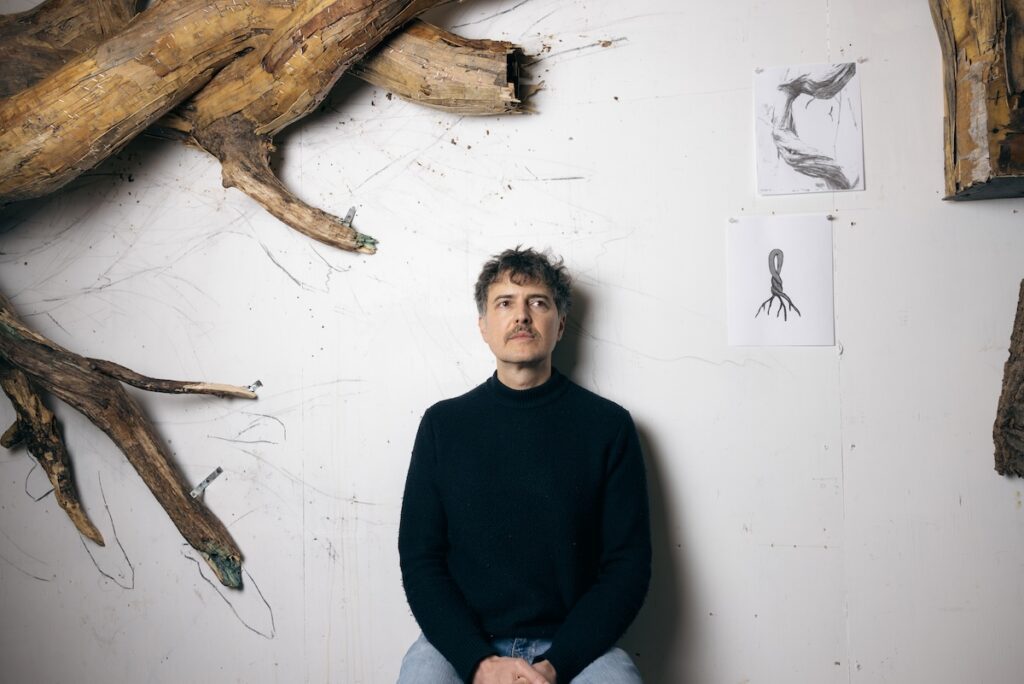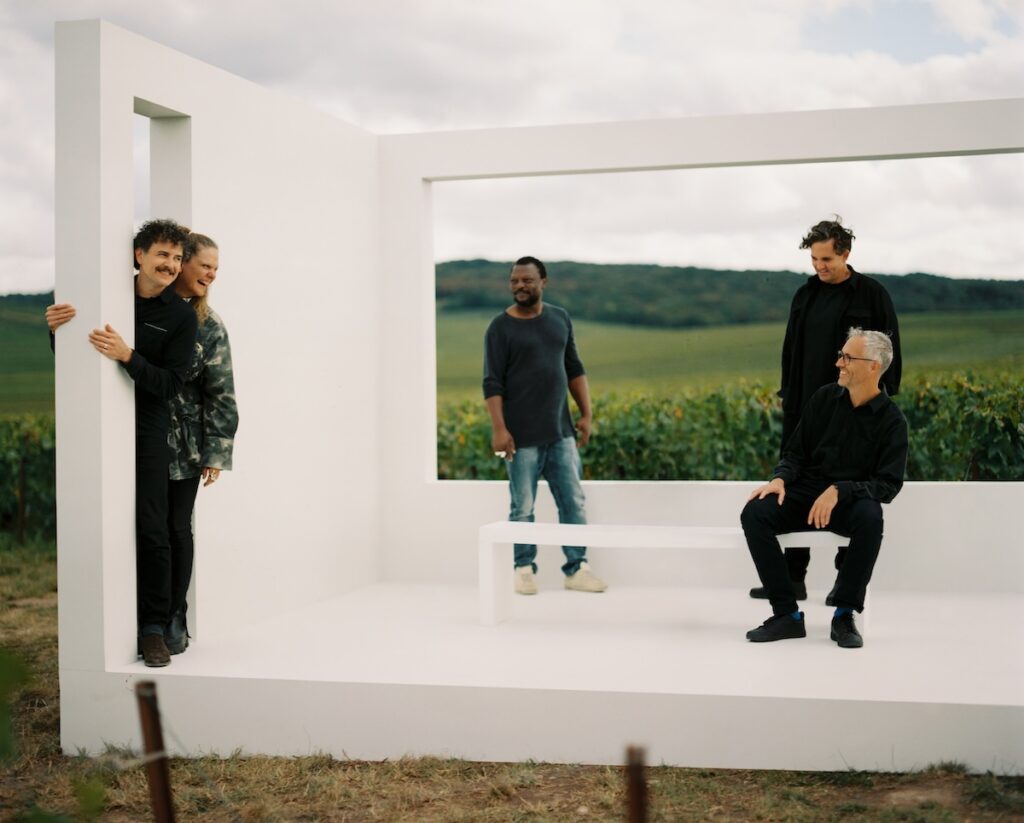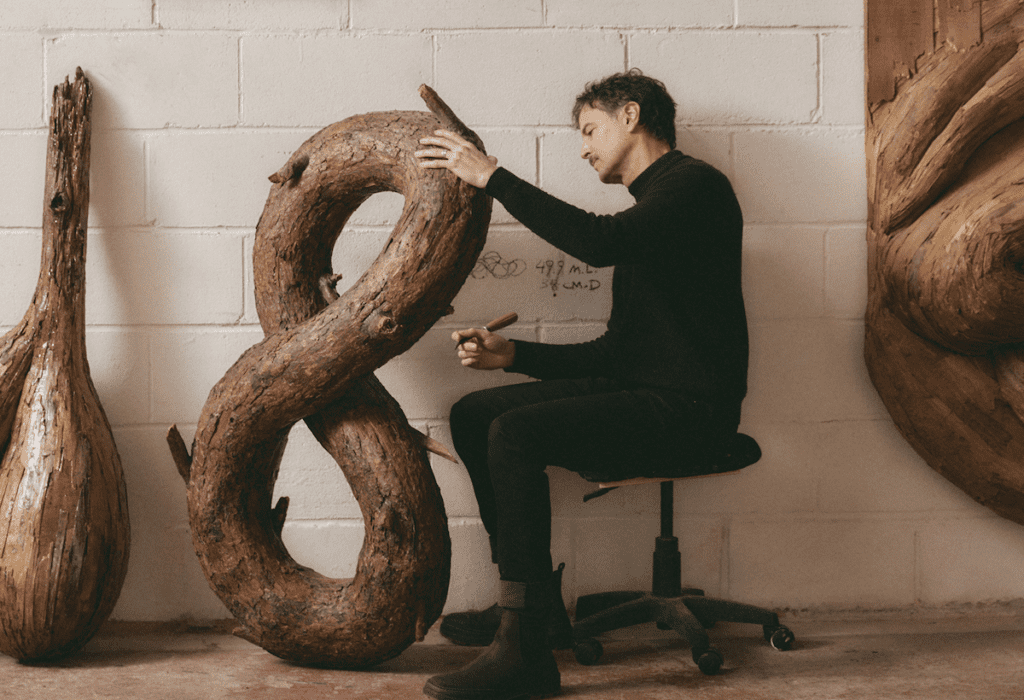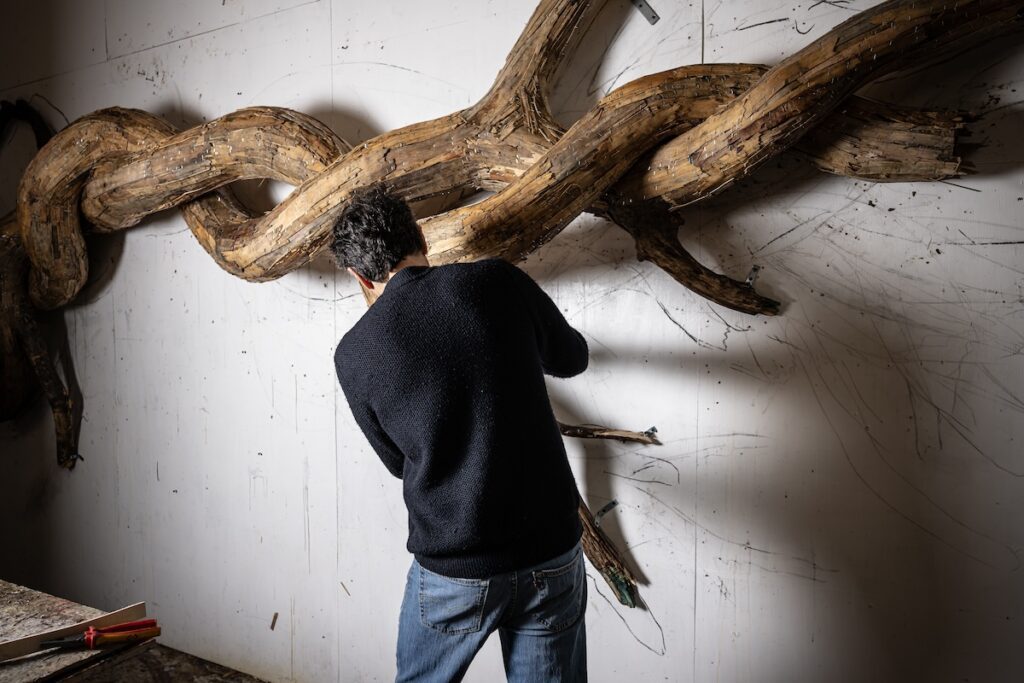This website uses cookies so that we can provide you with the best user experience possible. Cookie information is stored in your browser and performs functions such as recognising you when you return to our website and helping our team to understand which sections of the website you find most interesting and useful.
Interview: Artist Henrique Oliveira on Ruinart 2024 Carte Blanche and how nature inspires his art
By Shivani Dubey | 2 April 2024 | Arts, Culture, Lifestyle
Tempus sits down with Henrique Oliveira, one of the six contributing artists at Ruinart 2024 Carte Blanche, to learn about his relationship with nature
 Every year, Maison Ruinart invites contemporary artists to participate in their Carte Blanche series, where these artists propose original interpretations for a special limited edition champagne from the Maison. This year, for the first time ever, six different artists from around the world will be coming together to propose their collective vision for the Ruinart 2024 Carte Blanche. And one of these artists is Henrique Oliveira of Brazil.
Every year, Maison Ruinart invites contemporary artists to participate in their Carte Blanche series, where these artists propose original interpretations for a special limited edition champagne from the Maison. This year, for the first time ever, six different artists from around the world will be coming together to propose their collective vision for the Ruinart 2024 Carte Blanche. And one of these artists is Henrique Oliveira of Brazil.
The other five artists are Andrea Bowers from USA, Pascale Marthine Tayou from Cameroon, Marcus Coates from the UK, Thijs Biersteker from Netherlands and Tomoko Sauvage from Japan.
The theme this year is conversations with nature, something Henrique highlights in every piece of art he creates. For Ruinart, Henrique is set to create a freestanding real tree size sculpture — inspired by the champagne making process — made from recycled plywood and papier-mâché reinforced by an internal metal structure, which will stand in the Cour d’Honneur of Maison Ruinart’s headquarters in Reims.
We met Henrique at his London studio to learn more about being part of Ruinart 2024 Carte Blanche, how nature inspires his craft and the importance of sustainability in every aspect of life, but especially in art. Henrique, what was the inspiration behind this project?
Henrique, what was the inspiration behind this project?
I was inspired by the champagne-making process. The vine draws nutrients and water from the soil to produce grapes, whose pressed juice then returns to the underground chalk pits to ferment and age. Like a vine with an inverted structure, my sculpture evokes roots that blend together.
The vine plunges into the ground of the Maison’s courtyard and down towards the cellars. The sculpture evokes the perpetual cycle of winemaking, which begins anew every year. The labyrinth of wooden branches reflects the subterranean world that lies beneath the feet of visitors to the Cour d’Honneur at Maison Ruinart.
What was it like to be invited by Ruinart to exhibit your pieces?
I had always heard about Ruinart and [through my gallerist in Paris] had been invited in the past, but for some reason couldn’t go. And now they’ve invited me for a permanent commission. This is a great opportunity and I’m looking forward to displaying my work. Given that you’re working with Ruinart, is there anything different about your process this time?
Given that you’re working with Ruinart, is there anything different about your process this time?
I wouldn’t exactly say different, but perhaps because of the purpose of the show and the commission — the relationship with nature, this idea of recreating the structures using material that comes from trees and then giving back this tree — it’s more focused on that aspect, especially in the vine works.
Your art is often inspired by organic forms of nature. Is that process more exciting as opposed to just looking at nature as it is?
There is a variation of degrees in my work. For example, in some of my works, I have recreated a branch that looks like it could have been taken straight from nature. Something that looks like a tree but isn’t necessarily in a shape found in nature. So I like that ambiguity. If someone were to see my artwork, they might think, ‘Oh, is this a natural thing that was taken out and put here or is it something else?’
I like to think that my work is a reflection of the moment and the times that we’re living in. Until the modern era, nature was something we were always fighting against in order to make space for us. Today, humans are taking over the planet and nature is the fragile one, and the big effort now is to try to restore nature to how it was before. And in that sense you can understand my work and why I try to recreate something that’s just like a natural element. Is that why you try to find all of the materials for your art pieces out in nature — in dumpsters, construction sites, etc.? Because today, there is a heavy focus on sustainability in every aspect of our lives, but it seems like you have been making an effort to be sustainable since the very beginning.
Is that why you try to find all of the materials for your art pieces out in nature — in dumpsters, construction sites, etc.? Because today, there is a heavy focus on sustainability in every aspect of our lives, but it seems like you have been making an effort to be sustainable since the very beginning.
It’s really an idea of circularity when you use materials to recraft nature in a way. A friend of mine lives in Suffolk in an area with lots of trees, so sometimes they just go and collect some bark from the ground or from a cut-down tree for me. And usually I store it in the studio and sometimes I use it in another installation, and then it comes back to the studio and I use it again. I recycle my own artwork.
Finally, what’s your own relationship with nature? Despite living in big cities like Sao Paulo and London, how do you keep your connection with nature?
I miss it. It took me a long time to get used to living in a city. I grew up in this town in Brazil — and many Brazilian towns are like that — where there were lots of inhabitants concentrated in one area and then there’s a huge area with no inhabitants until the next town. So you had this opportunity to walk in the fields. There are areas of forests still preserved in Sao Paulo that they keep along the rivers. So I grew up going to the river, swimming and walking in the jungles in that area. Now, I try to go on hikes whenever I can.







